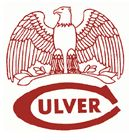Culver
| Culver Academies Eagles | |

| |
|---|---|
| Location: Culver, Indiana | |
| Coaches | Phil Blessman |
| State Championships | 2005 NAQT |
| Program Status | Unknown |
| School Size | Unknown |
| NAQT Page | link |
"There is no such thing as dirty knowledge, there is only points"
The Culver Academies are a private boarding school in Northwest Indiana. Nicknamed the Eagles, the quizbowl team currently participates in the Tippecanoe Valley Conference. Founded by Phil Blessman in 2004, Culver has consistently been one of the three most active programs in the state, along with St. Joseph's and Harrison. Culver is believed to be the first team in Indiana high school quizbowl to play on NAQT questions.
History
The Culver Academy Quiz Bowl team was founded during the 2004-2005 school year by Mr. Blessman, in his first year at the Academy after moving from the Conserve School way up in the hinterlands of Wisconsin. The table he set up at the Activities Fair that Labor Day was not flashy - just a poster of Uncle Sam encouraging students to join quiz bowl. At the first practice nearly 20 players showed up - the most to ever attend a quiz bowl practice at the Academy. At this practice, two players distinguished themselves: Noah Weiss, a senior, and Lane Pratt, a junior. Also noted at the practice was the lightning-fast math skills of Bryce Durgin, who would become a force in Indiana quiz bowl by his senior year in all areas other than math. Thus, the Academies team was born.
Tournament Hosting
Since the founding of the team, Culver Academy has usually hosted a few NAQT tournaments each year, including a Midwestern Championship in early-mid May.
In 2008, Culver "hosted" a Goldfish Tournament on NAQT questions. Teams participate at their home schools, making note not only of the questions that are answered correctly, but at the point in the questions where the question is answered. Theoretically, the results will not only permit a ranking of participating teams, but will permit "head-to-head" comparisons of each team. While not the same as a true "head-to-head" match up, and limited to a single round, the tournament attracted several dozen teams.